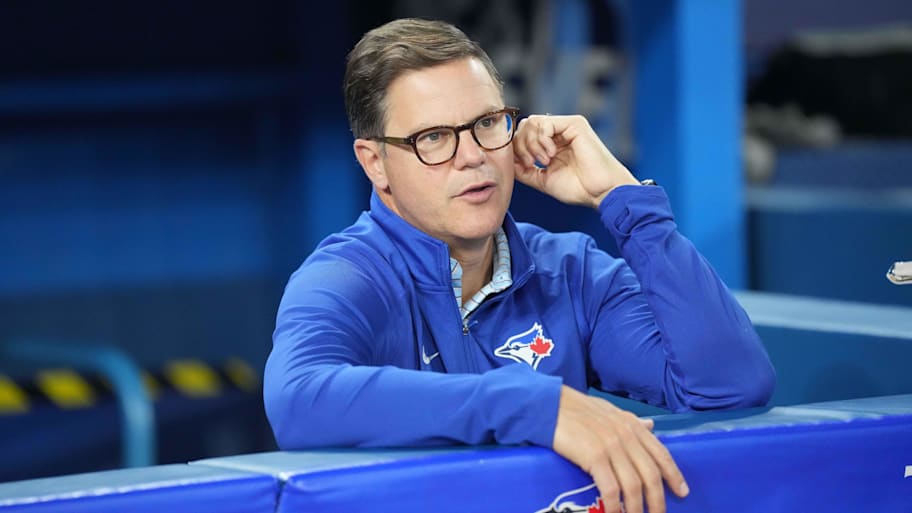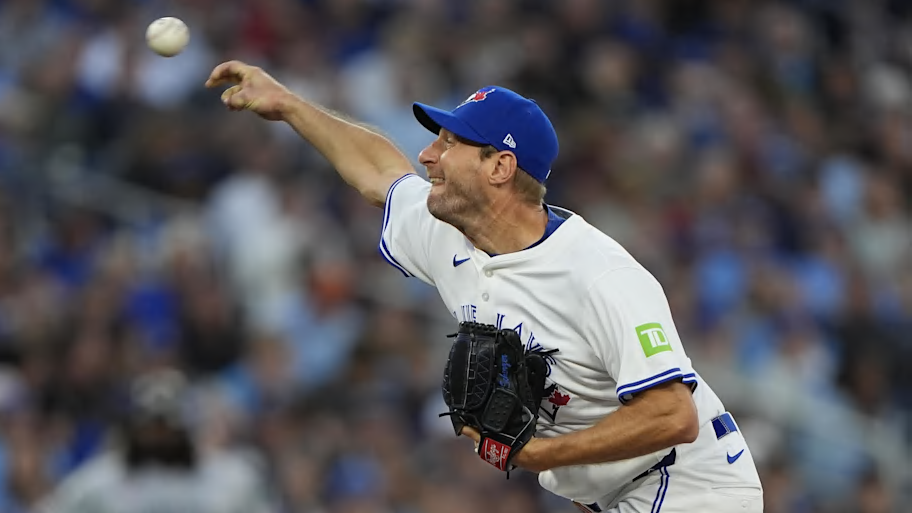NEW YORK — Shane Bieber looked around the other day and realized something shocking: Eight years into his career, with nearly 900 innings pitched and a Cy Young award on his mantle, he is a rookie compared to his fellow Blue Jays starting pitchers.
“He’s 30!” says his 41-year-old rotationmate Max Scherzer with a laugh. “He’s a young buck! We should make him wear a pink backpack.”
Indeed, in an era of flamethrowers who are too young to turn on the stove, Toronto’s rotation looks closer to retirement than to retiring hitters. Scherzer; Bieber; Chris Bassitt, 36; Kevin Gausman, 34; and José Berríos, 31, make up the only contingent in the majors with no one in his 20s. Their average age, 34.4, would outlast nearly five generations of actual blue jays.
Entering Thursday, the Blue Jays have received 103 starts from pitchers 31 or older, the most in the majors this season and on pace for the most by a division winner since at least 2019. The only current team with a similar number of gray hairs is the Rangers, who employ 37-year-old Jacob deGrom, 36-year-old Patrick Corbin and 36-year-old Merrill Kelly, with 35-year-old Nathan Eovaldi on the shelf with a strained rotator cuff—but 29-year-old Jacob Latz and 25-year-old Jack Leiter help keep them youthful. And yet the Jays’ 31-plus starters have a 4.18 ERA, right in line with league average.
Scherzer famously pitched for the 2019 Nationals, who got 65 starts from 31-plus-year-olds and called themselves Los Viejos. He says he does not look back at that nickname and chuckle at his naivete. “I was old in ’19!” he says. “When you're 36 in the game, that’s when you’re old. That’s when all the GMs start looking at you funny.” (Perhaps that was a senior moment: Scherzer was 34 in 2019.) That club won the World Series on the back of its horses. But most teams these days value young studs who can spin the ball for five and a third innings, then turn it over to a bullpen full of even younger studs who can spin it even harder.
Have the Blue Jays noticed that many of them are more suited for an old-folks’ home than home plate?
“Man, you’re so blunt,” says Gausman with a laugh. “I’ve definitely noticed we’re not young.”

General manager Ross Atkins puts it more delicately. “I’m aware of our experience,” he says.
Most of them use that word. “The majority of young guys now, they have the stuff,” says Gausman. “They can make a ball move 22 inches horizontally, vertically, in whatever direction. But where they lack is the experience on the field. They’ve thrown all the bullpens imaginable. They know the metrics. They know the axis on pitches. They can throw a pitch in-game, and you’ll see guys in game literally throw a pitch and look at the metric [on the scoreboard]. ‘All right. I need to turn my wrist a little bit more.’ It’s crazy. But where they lack is: All right, I threw this pitch for a strike. Now I need to throw this for a ball. Now how does this pitch play off this next pitch? How does my miss set up this next pitch?”
Those are the discussions they say they are having in the dugout. “It’s not trying to dummy down a conversation, so you don't overwhelm somebody,” says Bassitt. “It’s a lot more intricate than a normal conversation.”
And a lot less kind. “We don’t gotta be gentle,” he adds with a grin.
“[Scherzer] will say, straight up, ‘Why did you throw that pitch? That was stupid,’” says Gausman. “‘You shouldn’t have thrown that pitch.’ And things are just so easy for him. So you talk to him after an outing and you’re like, ‘Well, I was trying to throw this pitch down and away. I missed my spot by two feet.’ And he’s like, ‘Well, why didn’t you just throw it down and away?’”
They also value the same things. In early September, Bieber gave up five runs in a 35-pitch second inning to the Reds. He then allowed one baserunner over the following four frames as the Blue Jays came back to win. A week later, they’re all still raving about the job he did.
“Almost every single pitcher in the big leagues either loses that game or doesn’t go six—or both—and now we’re really in trouble,” says Bassitt. “That was one of the most impressive outings of the year for us.”
He adds, “We’re talking pitching. We’re not talking movement. We’re not talking how hard you’re throwing. We don’t care if Bieber’s throwing 95 [mph] or 91. It’s more so when to throw a chase pitch 1–0, knowing what pitch to do that, and understanding sometimes going 2–0 is better than trying to go 1–1, things like that. Small things that the young group has never been brought up like that. This is stuff that was getting screamed at us. You weren’t allowed to advance past High A if you weren’t throwing six innings. We came up in a very different environment, and it’s five guys that have the exact same mindset.”
They also enjoy not having to worry about monitoring anyone else’s workload or shutting down a major contributor during the stretch run. They know how to take care of their bodies—even if that gets harder every year.
Foot on the Gaus pedal 😤 #lightsupletsgo pic.twitter.com/AaBjVaCu2b
— Toronto Blue Jays (@BlueJays) September 6, 2025
“I think we definitely kind of push each other,” Gausman says. “Like, Yeah, we are old, but we gotta go out and do it. And honestly, it makes it fun. You know, it’s constant bitching and moaning, not really feeling too good.”
And Atkins dismisses the idea that calling up a young starter can sometimes provide the rest of the team with energy. “I think the thing that’s the most real is outs,” he says. In fact, Gausman says he derives energy just from watching Scherzer’s bullpens. “His competitiveness is like nothing I’ve ever seen,” Gausman says. “To have that at 41 when you’ve kind of checked every box—that’s impressive to me that he still pitches like some of these young guys, with that fire. I don’t think I’ll be like that at 41. I definitely won’t be pitching at 41.”
Scherzer shrugs. Really the only downside of aging, as far as he's concerned, is his bald spot. So he'll keep going—if only for the chance to work at a job that requires him to wear a hat.
More MLB on Sports Illustrated
This article was originally published on www.si.com as How the Blue Jays Are Riding Old Pitchers Into the MLB Postseason.
